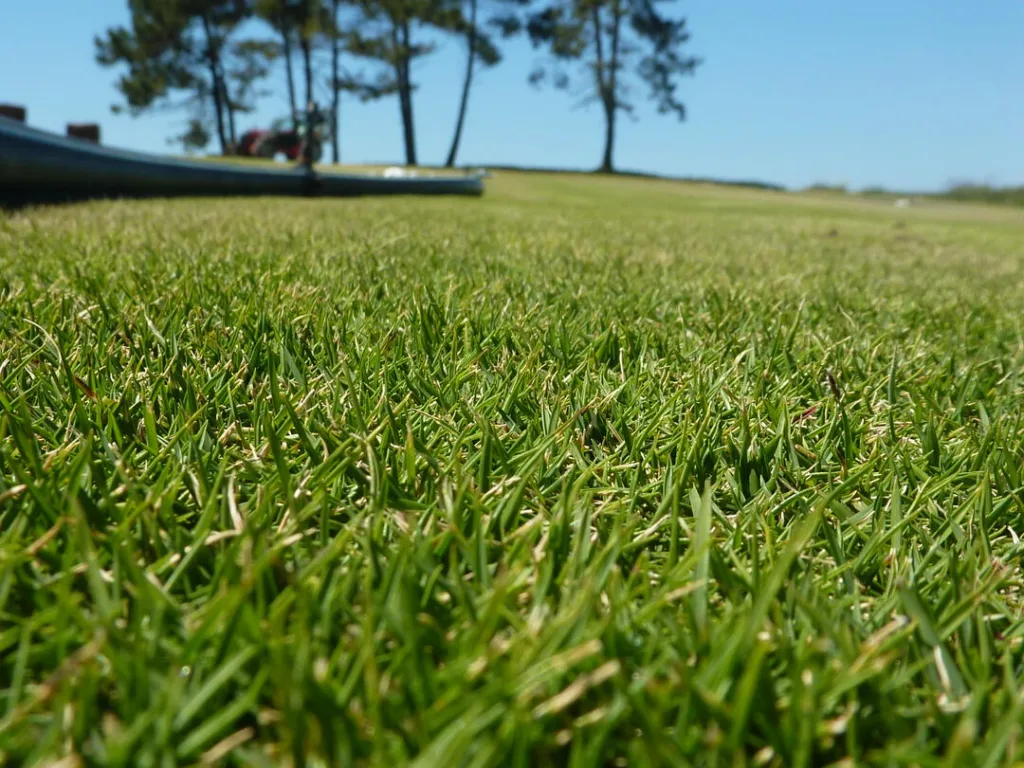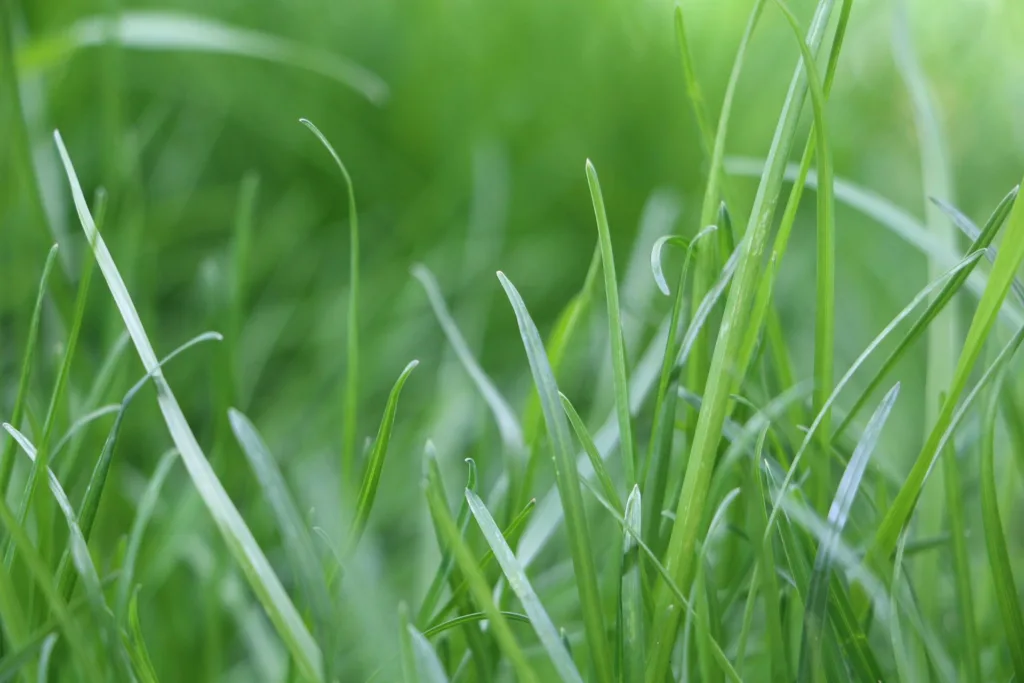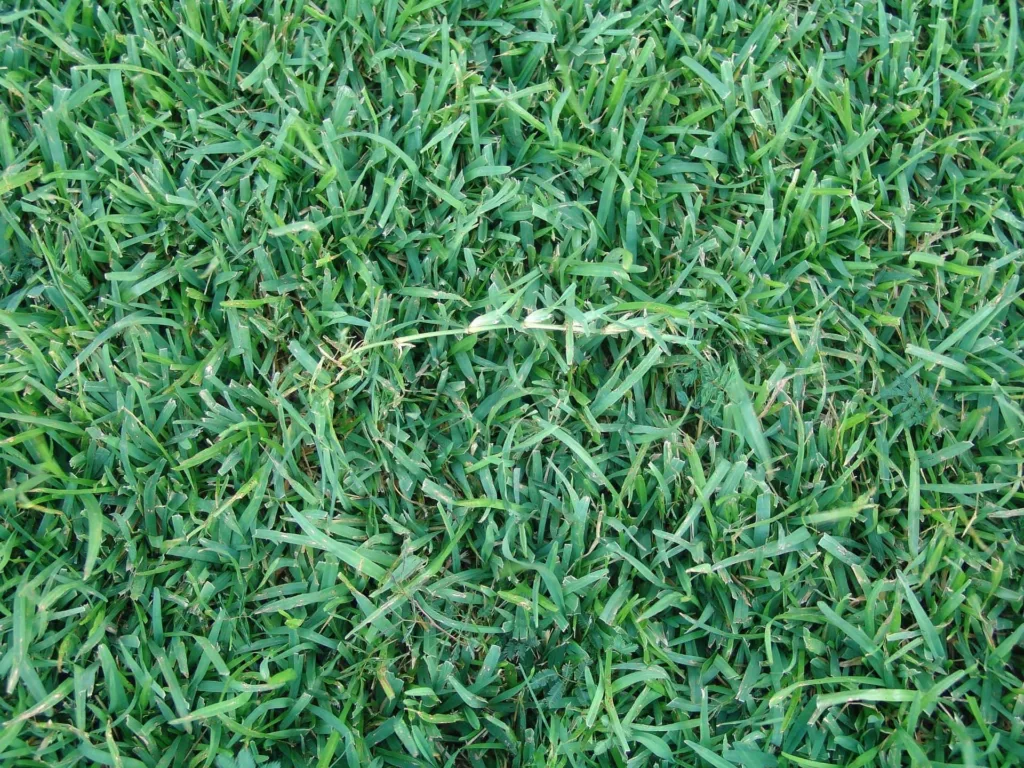Are you on the hunt for the perfect grass to beautify your lawn and withstand various challenges like drought and heavy foot traffic? Let’s talk about Zoysia grass—a true contender in the world of turfgrasses. This guide dives deep into why Zoysia might just be the superstar you need for a lush, enduring, and visually stunning lawn.
Introduction
So, Zoysia grass. Heard of it? If not, you’re in for a treat, especially if you’re tackling lawn duties head-on and aiming for that magazine-cover kind of yard. Let’s break it down: Zoysia is a warm-season grass with a knack for making lawns look sharp and well-dressed without demanding too much fuss. Why’s it gaining fans in both the residential and commercial spheres? Simple. It combines resilience with beauty and doesn’t buckle under pressure—whether from a drought or a spontaneous soccer game.
Known for its dense growth, Zoysia is the lawn’s way of fighting back against invasive weeds, exploiting its thick nature to essentially choke out unwanted guests. Its fine, soft blades offer a barefoot-friendly turf, making it an aesthetic winner, too. People are catching on, and it’s becoming a popular choice for those wanting a practical yet pretty lawn solution. Now that you have the gist, let’s dive deeper into what makes Zoysia a top contender in the turf wars.
What Makes Zoysia Grass Stand Out?
Zoysia grass isn’t just another option for your lawn; it’s a game changer. What sets it apart, you ask? Let’s dive into some of its standout characteristics that could make it the champion of your garden.
First, let’s talk drought tolerance. Zoysia has a knack for survival under water-restrictive conditions. Its roots dig deep, enabling it to access moisture from lower soil levels. During those dry spells when other grasses might brown, Zoysia stands out with its resilience, maintaining its green charm.
Then, there’s the density of its growth. Zoysia grows thickly, creating a carpet-like feel underfoot. This density isn’t just good for aesthetics; it also helps in outcompeting those pesky weeds. A thick Zoysia lawn leaves little room for unwanted plants, reducing your need for herbicides.
Lastly, we can’t ignore the sheer beauty of this grass. Zoysia is equipped with fine, soft blades that can make any lawn look like a lush, green oasis. Its texture is pleasing to touch and its uniform appearance can be quite the visual treat.
In sum, if you’re after durability, functionality, and curb appeal, Zoysia grants you all three. It’s not just grass—it’s an upgrade for your garden.
Optimal Planting and Growing Conditions for Zoysia Grass
If you’re considering cultivating a Zoysia grass lawn, understanding the optimal conditions for planting and growth is crucial. Proper timing and initial ground preparation can significantly influence the success of your lawn.
Best Planting Time
- Ideal Period: The best time to plant Zoysia grass is from late spring through early summer.
- Soil Temperature: This timing takes advantage of warmer soil temperatures which are critical for root development.
Soil Preparation
- Clearing the Area: Start by removing any weeds or debris to clear the way for your new lawn.
- Soil Testing: Check the soil pH; Zoysia grass thrives best in a slightly acidic to neutral pH range (6.0 to 7.0).
- Adjust pH: Use lime or sulfur to adjust the soil pH according to your test results, ensuring the best environment for Zoysia growth.
Planting Process
- Planting Options: You can opt to sow seeds, lay sod, or plant plugs.
- Soil Aeration: Ensure that the soil is well-aerated. For seeds and plugs, lightly rake the soil to help establish good soil contact, which is essential for germination and rooting.
Sunlight Requirements
- Daily Sunlight: Zoysia grass requires at least 6 hours of direct sunlight each day.
- Shade Tolerance: While Zoysia can tolerate some shade and is more shade-tolerant than many other warm-season grasses, its growth may be less vigorous in shaded areas.
Watering Needs
- Moisture for Growth: Although established Zoysia is drought-tolerant, new plantings require consistent moisture to establish roots.
- Water Amount: Aim to provide about 1 inch of water per week, via rainfall or manual watering.
- Avoid Overwatering: It is essential to moderate your watering to prevent issues such as root rot. A consistent, moderate watering schedule is ideal.
By understanding and implementing these optimal conditions for planting and initial care, you will create a strong foundation for a thriving Zoysia lawn that can withstand various seasonal challenges.

Zoysia Grass vs. Bermuda Grass vs. Perennial Ryegrass: The Showdown
Choosing the right grass for your lawn can be a pivotal decision, often involving a comparison between popular options like Zoysia grass, Bermuda grass, and Perennial Ryegrass. All three have distinctive qualities that suit different landscaping needs, making understanding their differences crucial for making the best lawn choice.
Overview of Zoysia Grass
- Attributes: Zoysia is known for its fine texture and deep green color.
- Climate Suitability: It thrives in warm climates and exhibits high drought tolerance, making it ideal for regions with water scarcity.
- Growth Pattern: The grass grows densely, providing a lush appearance and naturally suppressing weed growth, thereby reducing the need for herbicides.
Overview of Bermuda Grass
- Attributes: Bermuda is notable for its aggressive growth rate and rapid recovery from damage.
- Uses: This makes it particularly well-suited for sports fields and other high-traffic areas.
- Growing Conditions: Like Zoysia, it prefers sunny and warm conditions but requires more frequent mowing due to its fast growth.
Overview of Perennial Ryegrass
- Attributes: Perennial Ryegrass features a fine to medium texture with a rich green color. It’s prized for its fast germination and establishment, making it perfect for quick lawn repairs or overseeding.
- Climate Suitability: Best suited for cool-season climates, it performs well in northern regions and transitional zones. It tolerates light foot traffic and recovers quickly from wear, making it a go-to for athletic fields and active yards.
- Growth Pattern: Grows in bunches rather than spreading via stolons or rhizomes. While this means it doesn’t fill in bare spots on its own, it establishes quickly and forms a dense, upright turf when well-seeded and maintained.
Key Factors for Decision Making
When determining whether Zoysia or Bermuda grass is better for your lawn, consider the following:
- Climate Compatibility: Both grasses perform well in heat, but Zoysia has a slight edge in cooler temperatures.
- Soil Preference: Zoysia is adaptable to various soil types, whereas Bermuda prefers sandy soils and may need soil amendments to thrive in clay.
- Maintenance Level: Zoysia’s slower growth rate means less frequent mowing, appealing to those seeking a low-maintenance lawn. In contrast, Bermuda needs more regular upkeep to remain manicured.
- Lawn Appearance: If you desire a fine-textured, uniform lawn, Zoysia’s dense growth offers a soft, carpet-like feel. Bermuda has a coarser texture but is also visually striking.
Maintenance Tips for a Thriving Zoysia Lawn
Keeping your Zoysia lawn lush and healthy doesn’t have to feel like a full-time job. With a few straightforward practices, you can maintain its vibrant look and resilience. Let’s break it down:
Zoysia Grass Mowing Practices
Zoysia grass likes a trim now and then, but not too close. For optimal health and appearance, keep your mower blade set to cut the grass at about 1.5 to 2 inches high. Mowing at this height helps the grass develop a deep root system, which is essential for drought resistance. Plus, don’t mow too often—only when the grass is about a third taller than your target height. This way, you stress the grass less and give it a nicer, cleaner look after each cut.
Watering Routines
Zoysia is drought-tolerant, but it still appreciates a drink during extended dry spells. The key is deep, infrequent watering that encourages roots to dig deep into the soil. Aim for about 1 inch of water per week, whether from rainfall or your garden hose, and it’s best to water early in the morning. This timing helps reduce evaporation and gives the grass blades time to dry off during the day, which helps prevent fungal diseases.
Fertilization Schedules
Feed your Zoysia lawn with a balanced fertilizer to keep it in top form. Spring and summer are the prime times for fertilization, as the grass is actively growing. Use a nitrogen-rich fertilizer but follow the instructions carefully—you don’t want to overdo it. Over-fertilizing can lead to rapid growth, which sounds great but can actually make your lawn more susceptible to diseases and pests. Generally, fertilizing twice a year should be enough to keep your Zoysia healthy.
With these simple tips in mind, maintaining a thriving Zoysia lawn becomes more about routine care and less about constant upkeep. Regular mowing, proper watering, and timely fertilization will go a long way in preserving the beauty and resilience of your Zoysia grass. Remember, the best defense is a good offense when it comes to lawn care. By sticking to these practices, you’ll ensure your lawn remains a lush, inviting space that’s well-prepared to handle whatever comes its way.
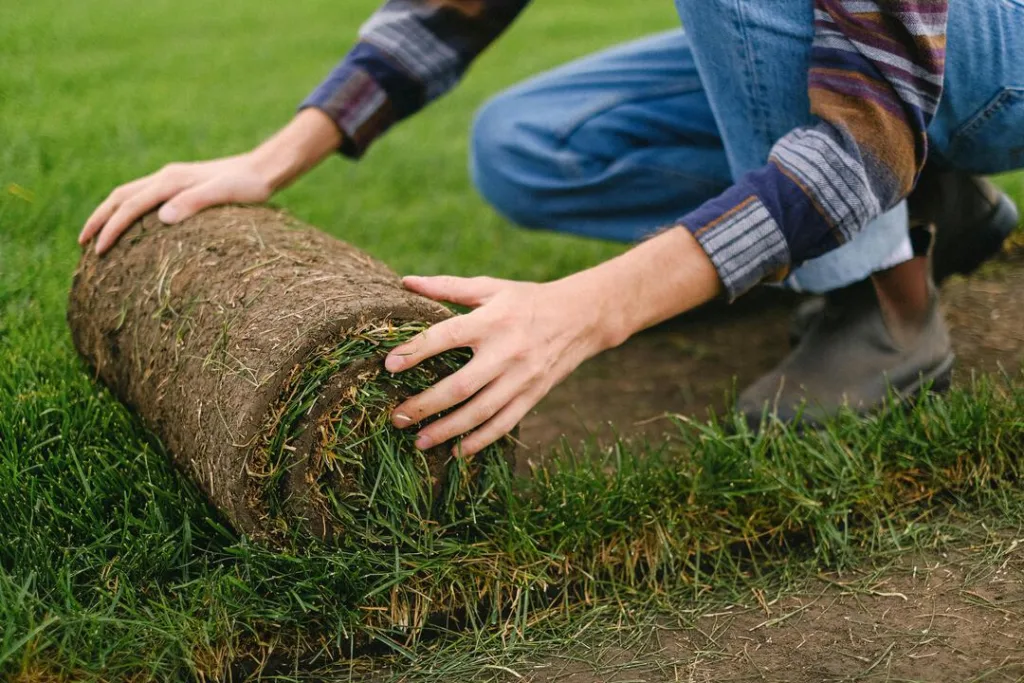
Installing Zoysia Sod for Instant Gratification
Ready to see a full, green lawn as soon as tomorrow? Laying down Zoysia sod can fast-track your way to a lush landscape. Let’s walk through how to correctly install Zoysia sod for those immediate, eye-pleasing results, and cover a few crucial tips to get your new grass off to a strong start.
Step 1: Prepare the Ground
Before anything else, clear the area of weeds, stones, and debris. Use a rototiller to loosen the soil—this helps the new roots penetrate deep and fast. Aim for a depth of about four to six inches. Smooth the soil with a rake and, ideally, add a layer of compost to enrich the ground. Ensure the site is level to prevent water pooling and uneven growth.
Step 2: Lay the Zoysia Sod
Start laying the sod along a straight edge such as a driveway or sidewalk to keep your lines clean and straight. Butt edges and ends against each other tightly without overlapping. Stagger the joints in each row like bricks to avoid lines running down the whole lawn, which helps with stability and appearance.
Step 3: Roll and Water
Once all pieces are down, use a lawn roller to press the sod into the soil, eliminating air pockets and ensuring good root contact with the soil. Give your new lawn a hearty drink of water; the first watering should be deep enough to soak the sod and the soil beneath it. This initial watering is crucial; it helps the sod establish and reduces the risk of it drying out.
First Weeks Care for Your Zoysia Grass
For the next few weeks, your main job is to keep the sod moist but not soggy. Depending on your climate, you might need to water daily or every other day. As the grass starts to take root, gradually reduce the watering frequency to encourage deeper root growth. Avoid heavy foot traffic on the new sod for at least a few weeks to give it a chance to firmly establish without disturbances.
Installing Zoysia sod offers the quickest path to a beautiful lawn. However, it requires attention to detail in the preparation and care stages to thrive. With these steps, you’ll enjoy instant curb appeal and a healthy foundation for ongoing lawn enjoyment.
Drought Management: Zoysia’s Superpower
When the rain skips your calendar invites and your lawn starts looking a bit desperate, that’s when Zoysia grass struts its stuff. Renowned for its superhero-level drought tolerance, this grass type keeps lawns looking more “lush backyard” than “dusty desert” even when the skies turn stingy with water.
First off, how does Zoysia handle the dry spells so well? It’s got a deep root system that reaches farther into the earth to find moisture, which is like having a savings account when times get tough. This means it doesn’t throw in the towel quickly.
But even the toughest plants benefit from smart tactics. During droughts, or in generally water-sparse areas, you can support your Zoysia lawn by adopting a few clever strategies. Mulching is a fantastic start. Spread a thin layer of organic mulch around your garden and over your grass. It helps retain soil moisture and reduces temperature, which keeps those roots cozy and hydrated.
Mowing height is another key player. Keep your blades a bit higher. Tall grass shades its own roots and helps soil retain moisture. Think of it as the grass giving itself a little self-hug, keeping cool and collected under pressure.
And let’s not forget about water-efficient habits. Irrigate your lawn wisely by watering deeply but infrequently, which encourages deeper root growth. Early morning is the best time as it reduces evaporation losses. If you’re looking for tools and tips to up your water-saving game, clicking through to resources like the EPA’s WaterSense can arm you with knowledge and gadgets that make every drop count.
Implementing these practices not only helps your Zoysia lawn survive a drought; it can also lead to a healthier lawn that’s jazzed up to face whatever the weather throws its way.
Addressing Shade: Zoysia in Low-Light Areas
When it comes to shade tolerance, Zoysia has a bit of a dual personality. Unlike some fully sun-loving grasses, Zoysia doesn’t throw in the towel the moment it spots a shade. That said, it won’t thrive in deep, dark shadows either. If your lawn has dappled sunlight or areas that receive a few hours of sunlight per day, Zoysia could still be on your team.
Suitability of Zoysia Grass for Shady Areas
Zoysia grass, specifically certain cultivars like Zoysia ‘Emerald’ or Zoysia ‘Zeon’, shows a better tolerance to lower light conditions compared to other warm-season grasses. These specific types manage a decent performance in moderately shady areas, making them a useful choice for lawns with mixed lighting conditions.
Tips for Managing Zoysia Grass in Less Sunny Environments
Even the sturdiest shade-tolerant Zoysia will need a bit of help to stay lush and green in reduced light. Here are a few tips to keep it in fighting shape:
Optimize Light Exposure: Trim tree branches to maximize sunlight reaching your grass. More light equals happier Zoysia. It’s as simple as that.
Adjust Mowing Height: In shadier parts, let your Zoysia grow a bit taller. A higher mowing height—think about 2.5 to 3 inches—helps the grass capture more light and perform photosynthesis more efficiently.
Go Easy on Water and Fertilizer: Without high sunlight, your Zoysia won’t guzzle as much water or chow down on nutrients at the same rate as it would in full sun. Water less frequently and tailor your fertilizer application to the growth and color of the grass.
Watch for Weeds: The slower growth of Zoysia in shady areas often opens the door for weeds. Maintain diligence with weed control, using both pre-emergent and post-emergent treatments as necessary.
Choose the Right Variety: Not all Zoysia is created equal when it comes to shade. If shade is a major factor in your yard, pick a variety known for its shade tolerance right from the start.
Considering these tips can help you manage Zoysia grass in less sunny environments, turning potential weaknesses into strengths. With a touch of care and attention, your shaded Zoysia lawn can still be a lush, green retreat.
Troubleshooting Common Problems
Zoysia grass isn’t just pretty; it’s tough. But even the toughest characters face challenges. Let’s get straight to addressing some of the more common issues you might encounter with Zoysia grass and how to handle them effectively.
Thatch Buildup
First off, thatch. It’s like the bad habit Zoysia sometimes can’t kick. This layer of dead and living organic matter that accumulates between the green vegetation and the soil surface can really suffocate your grass if left unchecked. Thatch can restrict water and nutrient penetration and harbor pests and diseases. To tackle a serious thatch problem, you’ll want to aerate your lawn. This process involves perforating the soil with small holes to allow air, water, and nutrients to penetrate the roots. For a hardcore thatch situation, consider dethatching with a specialized rake or machine.
Fungal Issues
Next, fungi. Not the fun kind you find in a forest, but the annoying types that love moist, warm environments. Brown patch and dollar spot are common fungal foes of Zoysia. These can appear when humidity teams up with high temperatures, particularly during spring and fall. The solution? Fungicide applications can be effective, but first, ensure your watering practices are spot on—water deeply but infrequently, and preferably in the morning to let the grass blades dry out during the day. Also, maintain a balanced fertilization schedule to avoid excessive nitrogen, as this can increase susceptibility to fungal diseases.
Pest Invasions
Lastly, pests. From grubs to billbugs, Zoysia isn’t immune to creepy crawly assaults. The symptom to watch for is often irregular brown patches that don’t recover despite proper watering and fertilizing. If you suspect an invasion, a good start is to simply inspect your lawn closely. For an organic approach, beneficial nematodes can be effective against grubs. For more extensive problems, you may need to consider an appropriate insecticide. Always match the treatment to the specific pest to avoid harming your lawn or the environment unnecessarily.
In wrapping up, regular monitoring and maintenance are your best bets for keeping these issues at bay. Zoysia is robust, but it loves a bit of TLC. Stay vigilant, and your Zoysia lawn will continue to be the envy of the neighborhood.
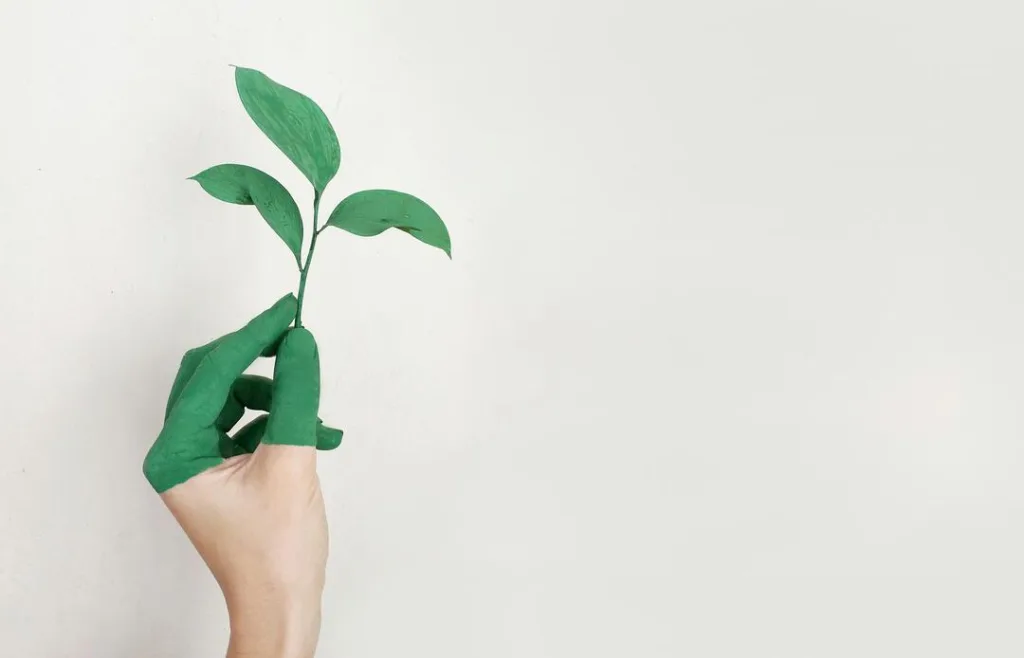
The Future of Your Lawn with Zoysia Grass
Choosing Zoysia for your lawn is akin to making a long-term investment in an exceptionally lush, robust outdoor carpet. Here are the key benefits and tips for maintaining a vibrant Zoysia lawn over time.
Long-term Lawn Benefits
Dense Growth for Natural Defense
Zoysia is particularly known for its dense and deep-rooted nature, which:
- Reduces Weed Encroachment: The density of the grass makes it hard for weeds to establish themselves.
- Prevents Soil Erosion: The deep roots hold the soil effectively, reducing erosion even in adverse weather conditions.
Adaptive Qualities of Zoysia
Seasonal Adaptability
- Low Maintenance: Despite needing regular care, Zoysia isn’t overly demanding.
- Resilience Across Seasons: Zoysia thrives in varying conditions, handling everything from scorching summers to cooler falls.
Lawn Care Tips by Season
- Summer: Increase watering schedules to help the grass cope with the heat.
- Spring: Start the season with timely fertilization to promote growth.
- Adjust Mowing Height: Setting your mower higher during hot periods allows grass blades to shield each other, reducing stress and burn.
Conclusion
So, to wrap it all up neatly, choosing Zoysia grass for your lawn isn’t just about opting for greenery underfoot—think of it as picking a robust companion that stands tall through drought, stomping feet, and the scorching sun. We’ve walked through its exceptional drought tolerance, the dense growth that keeps weeds at bay, and its undeniable curb appeal with those fine, soft blades that can make any onlooker green with envy.
If you’re weighing your options, remember this: Zoysia might just be the trusty ally you need for a low-maintenance, visually stunning outdoor space. Whether you’re battling fierce summer rays or seeking a lush lawn that asks little and gives a lot, Zoysia stands ready to rise to the challenge.
Ready to transform your lawn into a resilient, green sanctuary? Embrace Zoysia — and let its transformative power work its magic on your outdoor space. It’s more than just grass; it’s a lifestyle upgrade. So go ahead, take the leap, and turn that dream lawn into a reality with Zoysia. Your future self will thank you as you bask in the verdant beauty of your own making.
